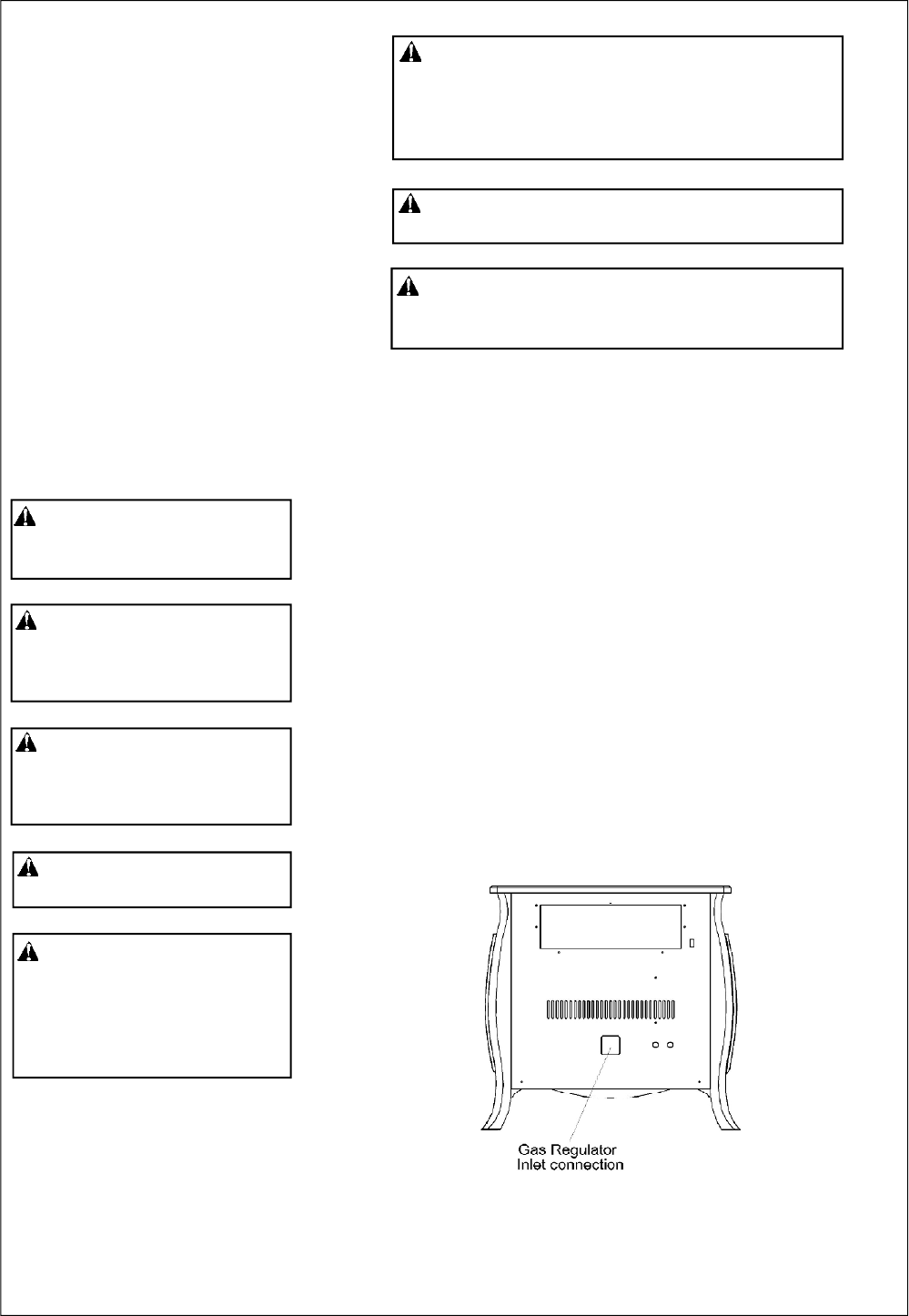
8
Minimum Wall and Ceiling Clearances
(see Figure 4)
A. Clearances from outermost point of
stove top to any combustible side
wall should not be less than 12
inches.
B. Clearances from outermost point
of stove top to any combustible
back wall should not be less than
6 inches (lncludes corner
installations).
C. Clearances from the stove top to the
ceiling should not be less than 48
inches.
CONNECTING TO GAS
SUPPLY
INSTALLATION ITEMS NEEDED
Before installing heater, make sure you have the items listed
below.
l piping (check local codes)
l sealant (resistant to propane/LP gas)
l equipment shutoff valve*
l test gauge connection*
l sediment trap
l tee joint
l pipe wrench
l flexible gas hose. (Check local codes)
*A CSA design-certified equipment shutoff valve with 1/8" NPT
tap is an acceptable alternative to test gauge connection.
Purchase the optional CSA design-certified equipment
shutoff valve from your dealer.
The installer must supply an external regulator. The external
regulator will reduce incoming gas pressure. If you do not
reduce incoming gas pressure, heater regulator damage could
occur. lnstall external regulator with the vent pointing down as
shown in Figure 6. Pointing the vent down protects it from
freezing rain or sleet.
Figure 5 - Gas Regulator Location For Gas inlet Connection
WARNING: A qualified service
person must connect heater to gas
supply. Follow all local codes.
WARNING: This appliance re-
quires a 3/8" NPT (National Pipe
Thread) inlet connection to the pres-
sure regulator.
WARNING: Never connect heater
to private (non-utility) gas wells. This
gas is commonly known as wellhead
gas.
WARNING: Do not over tighten
gas connections
CAUTION: Never connect heater
directly to the gas supply. This heater
requires an external regulator (not
supplied). lnstall the external regu-
lator between the heater and gas
supply.
CAUTION: Use only new, black iron or steel pipe.
Internally-tinned copper tubing may be used in certain
areas. Check your local codes. Use pipe of 1/2" diameter
or greater to allow proper gas volume to heater. If pipe is
too small, undue loss of pressure will occur.
CAUTION: Avoid damage to regulator. Hold gas regu-
lator with wrench when connecting into gas piping and/or
fittings.
CAUTION: Use pipe joint sealant that is resistant to
gas (PROPANE or NG).
INSTALLATION
Continued


















